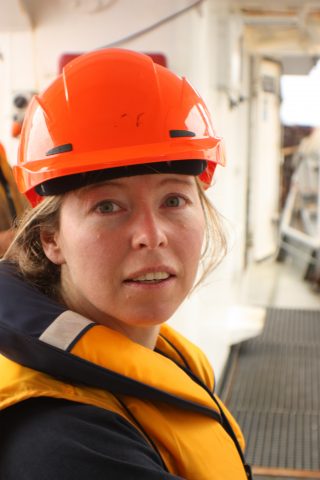I have always been interested in art and its role in starting conversations and challenging our way of thinking. I studied art and art history at high school and am a regular visitor to art galleries and exhibitions, especially when travelling. As a marine scientist, I find plankton, deep-sea creatures, and rocks (especially thin sections) beautiful. While I have several science friends who have engaged and collaborated with artists through artists-at-residence in scientific institutions, I have not previously engaged directly in an art-science collaboration myself. I also naively thought that it was the role of science to inspire the artwork.
A few weeks prior to the “Pinging in the New Year” voyage on the RV Falkor, I found out that Jessica Leitmanis would be our Artist-at-Sea. I spent a while searching her website and reading up about her work using marine debris, primarily rope collected from remote beaches around Australia, and reimagining it as beautiful sculptures through weaving. As her website says, “Through her work Jess explores ideas that encompass the environment, design, consumer culture, sustainability, sociology and philosophy.”
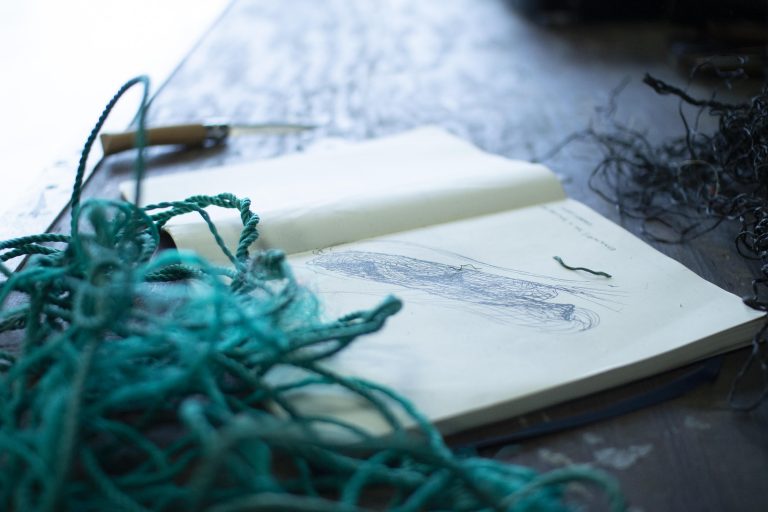
A short time later, I found myself searching the internet for any research papers that had been done on the marine plastic debris for the Tasman Sea region. There appeared to be little previous work sampling this part of the ocean, but several ocean modelling papers suggesting that we might expect plastic accumulation in the region due to the winds and currents.
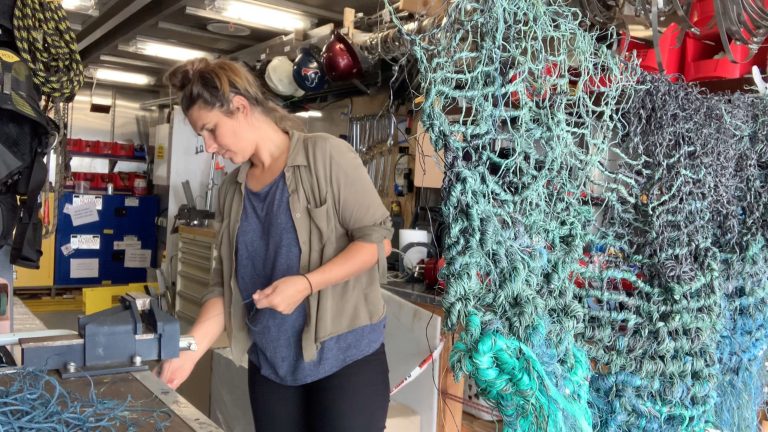
I had been inspired by Jess’s work to understand the extent of plastic pollution in this remote region of the Southwest Pacific Ocean, hundreds of kilometres offshore and away from large rivers and cities.
I refocussed my literature search for papers on how to sample for marine debris in the oceans. With no time to buy or acquire specialist equipment, I scrambled around the laboratory at the University of Queensland School of Earth and Environmental Science to see what equipment was available to take on the RV Falkor that could be used to sample for marine microplastics. I also contacted the Marine Techs on the ship to find out a little bit more about the laboratories on board and the options for setting up some equipment.
On board the Falkor, we started to experiment with our underway microplastic sampling set up. Unfortunately, due to the nature of being a sea and occasional storms and rough weather, many items that you would typically use in the lab, like glass beakers, are not really an option. Many things on board ships are made of plastic as it is durable and less breakable than other materials. This makes it very hard to eliminate possible sources of plastic contamination. Over the four weeks on board the Falkor, our sampling set up evolved with help from the marine techs, engineers, fitters, and turners, and even borrowing some equipment from the galley (kitchen).
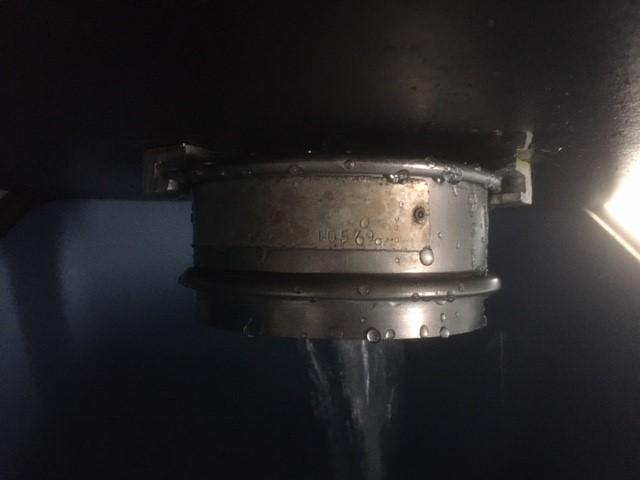
The final set up involved: a custom-designed sink lid to allow 2000 litres of uncontaminated seawater from the underway system to flow through a very fine sieve (125 μm) in approximately 2.5hours. The contents of the sieve were then rinsed out using some of the uncontaminated seawater collected in a metal wine cooler (from the kitchen) into a previously rinsed robust glass jar (from the kitchen). The contents of the sieve (floating in seawater in the glass jar) were then poured through a 1.2 μm filter to collect the sample on a filter paper, which was then examined under a microscope.
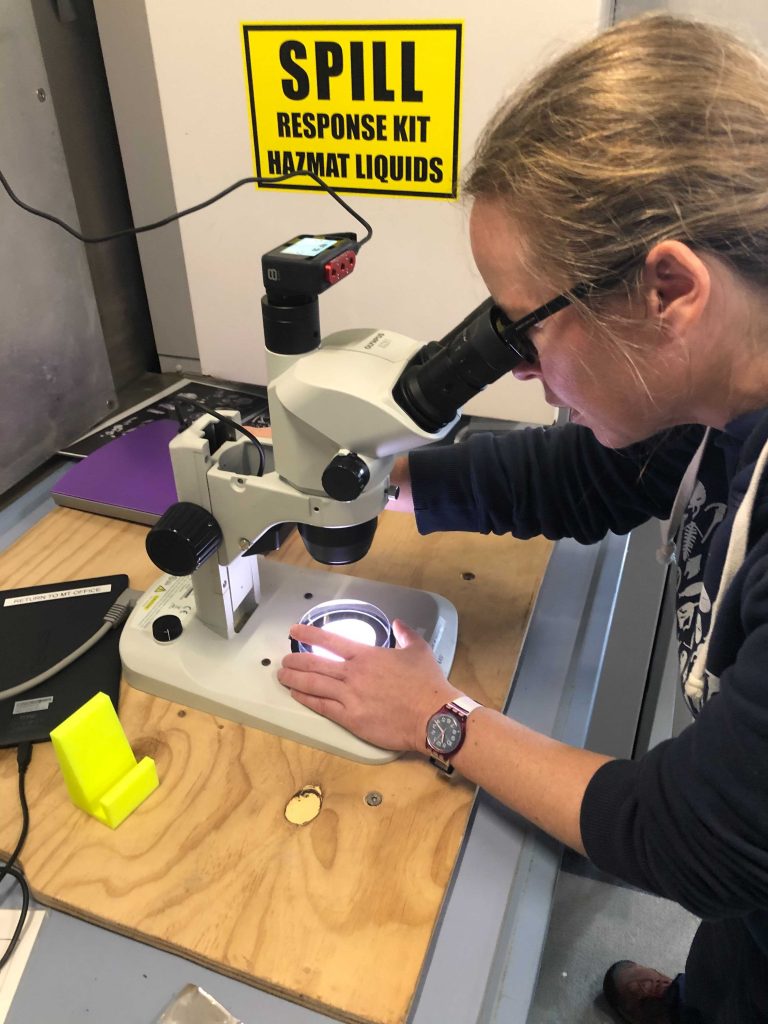
We took 43 samples from the underway system and these were complemented by 12 water samples of 72 litres from the CTD. The CTD samples were used as an independent test of the underway sampling, but also to determine if there was evidence of plastic below the surface and down at depths of 800 m, 2000 m and >4000 m.
Depressingly, despite the remote location of the voyage several 100s of kilometres offshore from Australia, we found evidence of microplastic fibres (<5 mm in size) in all our samples. Most of these were only visible with a microscope with 20 to 45 x magnification. In agreement with the scientific literature, microfibres appear to be ubiquitous throughout the oceans. After developing and trialling the system on the current voyage, sampling for microplastics will continue on the next voyage in the Coral Sea. The samples will then be taken back to the laboratory and counted, measured, and analysed to determine the type of plastic.
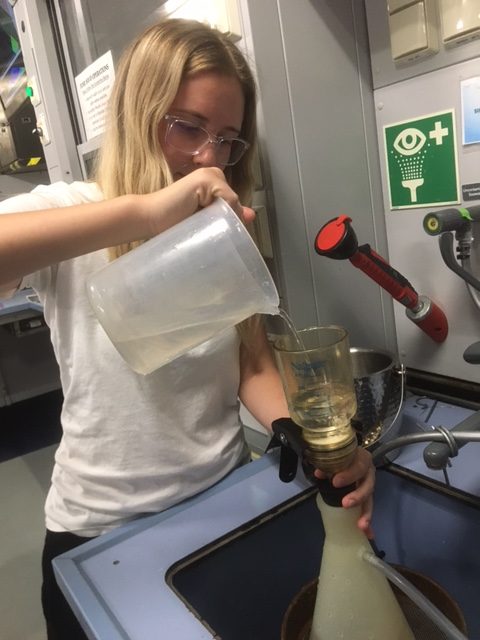
The Schmidt Ocean Institute Artist-at-Sea program is a great asset to the research voyages on board the RV Falkor. Both scientists (and the crew) and artists get so much out of these exchanges and different perspectives. We need artists to help us communicate the science and engage the public on important issues, but their artworks can also inspire us to undertake more research. Thank you, Jess Leitmanis, for your ocean advocacy.
Thanks to the scientists and crew who engaged and helped out with this project on board the RV Falkor. It was a team effort with everyone engaging and contributing their knowledge and ideas.
